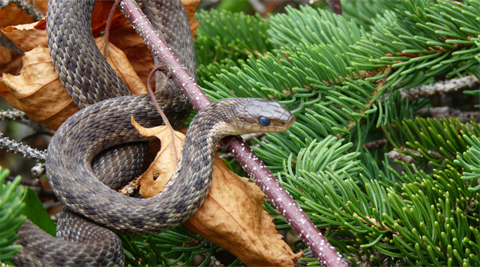Snake safety this Spring
Published on 19 August 2024

Did you know that snakes don't hibernate during the cooler months? Instead, they enter a period of slowed activity called brumation, seeking out warm and safe hiding spots where their metabolism slows down.
Snakes rely on external heat sources, so they may bask in sunlight before settling down for the night during cold spells. As temperatures rise, snakes become more active, often spotted in parks, reserves, creeks, and wetlands, hunting for prey like small mammals, birds, frogs, and lizards.
Our slithery friends play a crucial role in our ecosystem – they control pests like rats, and serve as food for birds of prey like kookaburras. If a snake feels threatened, they will defend themselves, so it's best to keep a safe distance, leave them alone and don’t block any escape routes to allow the snake to move to a safe hiding place.
Parks and reserves are snake habitats. To be as safe as possible, please avoid walking in long grass, stick to paths and keep pets on leads. There may be multiple snakes in an area, especially around waterways and wetlands, so be alert around these places.
If you spot a snake on Council maintained land, contact us on 9205 2200.